Ramesh Singh Summary: Sustainability and Climate Change: India and The World- 2 | Indian Economy for UPSC CSE PDF Download
INDCs
Intended Nationally Determined Contributions (INDCs) are plans that governments share with the UNFCCC (United Nations Framework Convention on Climate Change) outlining their strategies to tackle climate change within their countries. The decision at COP 19 (Warsaw 2013) urged all participating nations to prepare their INDCs, expressing their commitment to the convention's objectives well before COP 21.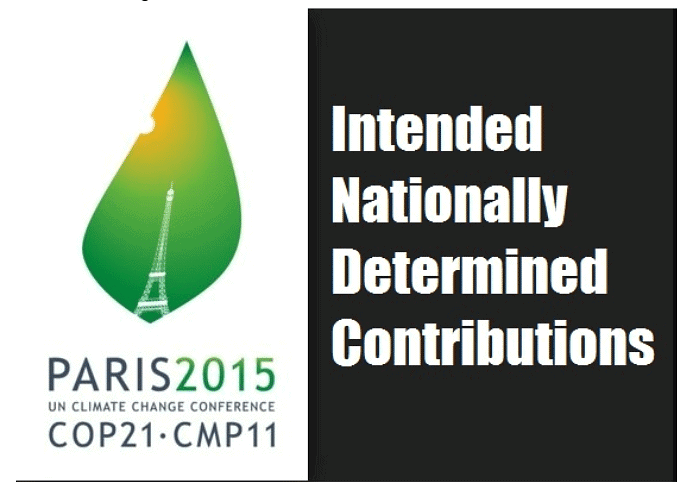
India's INDC India presented its INDC to the UNFCCC in October 2015. This comprehensive plan covers various aspects, including adaptation, mitigation, finance, technology, and capacity-building. The 2015 National Determined Contributions (NDC) included eight goals, with three specific targets to achieve by 2030:
- Achieve 40% of cumulative electric power installed capacity from non-fossil sources.
- Reduce the emissions intensity of GDP by 33 to 35% compared to 2005 levels.
- Create an additional carbon sink of 2.5 to 3 billion tons of CO2 equivalent through additional forest and tree cover.
India and Climate Change
- Promoting Healthy Living: Encourage a healthy and sustainable lifestyle based on traditions and values of conservation through a mass movement called "Lifestyle for Environment" (LIEE) as a key strategy to combat climate change.
- Choosing a Cleaner Path: Opt for a climate-friendly and cleaner development path different from conventional approaches, emphasizing a balanced and moderate economic development level.
- Reducing Emissions Intensity: Decrease the emissions intensity of its GDP by 45% by 2030, compared to the 2005 level.
- Increasing Renewable Energy: Achieve approximately 50% cumulative electric power installed capacity from non-fossil fuel-based energy resources by 2030. This involves technology transfer and financial support, including from the Green Climate Fund (GCF).
- Creating Carbon Sinks: Establish an additional carbon sink of 2.5 to 3 billion tonnes of CO2 equivalent through expanding forest and tree cover by 2030.
- Adapting to Climate Change: Enhance investments in development programs in sectors vulnerable to climate change, such as agriculture, water resources, the Himalayan region, coastal regions, health, and disaster management.
- Mobilizing Funds: Secure domestic and new funds, especially from developed countries, to implement the mentioned mitigation and adaptation actions, considering the required resources and financial needs.
- Building Capacities and Technology Diffusion: Develop domestic frameworks and international structures for the quick diffusion of cutting-edge climate technology in India. Also, foster collaborative research and development for future technologies.
International Initiative of India
India's Global Initiatives to Address Climate Change: To mitigate the risks of climate change and harness India's power on the global stage, the country has undertaken several significant initiatives. Let's briefly discuss these initiatives:
International Solar Alliance (ISA):
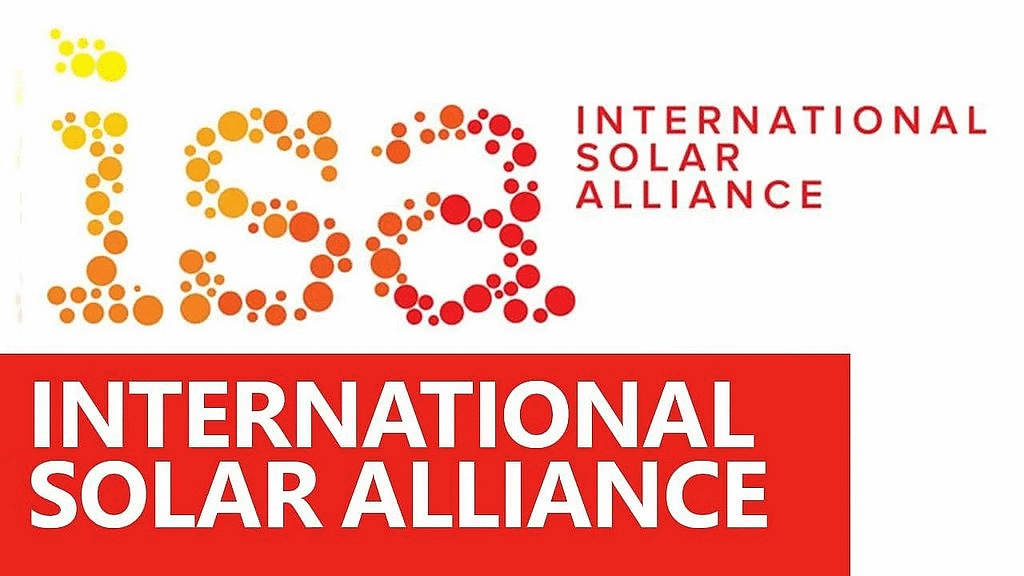
ISA is a global organization that focuses on promoting solar energy. It brings together countries situated between the Tropics of Cancer and Capricorn to collaborate on utilizing solar power.
The aim is to enhance solar energy use, address energy needs, and collectively work on sustainable practices.
Coalition for Disaster Resilient Infrastructure (CDRI):
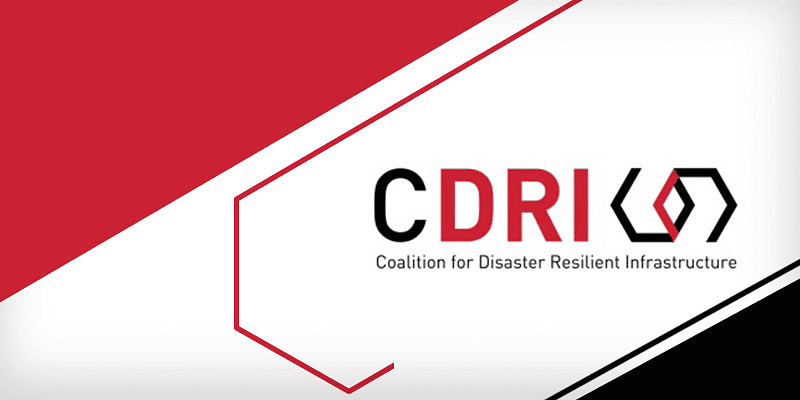
CDRI is a coalition that aims to make infrastructure more resilient to disasters.
It brings together countries to collectively work on creating infrastructure that can withstand natural disasters.
This initiative focuses on reducing the vulnerability of communities and promoting sustainable development.
Global Cooling Prize:

The Global Cooling Prize is an international competition encouraging the development of energy-efficient cooling solutions.
It challenges innovators worldwide to create sustainable and affordable cooling technologies that have a minimal impact on the environment.
These initiatives reflect India's commitment to addressing climate change challenges and collaborating globally for sustainable solutions.
LeadIT Group: Driving Industry Transition for Climate Action
 The LeadIT Group (Leadership Group for Industry Transition), launched jointly by India and Sweden
The LeadIT Group (Leadership Group for Industry Transition), launched jointly by India and Sweden
with support from the World Economic Forum (WEF) during the UN Climate Action Summit in September 2019, is a significant step to boost climate efforts under the Paris Agreement.
In November 2021, a Joint Ministerial Statement at the Leadership Summit urged countries and companies to create roadmaps for substantial emissions reductions in heavy industries and value chains over the next decade.
Key Agreements at COP 27
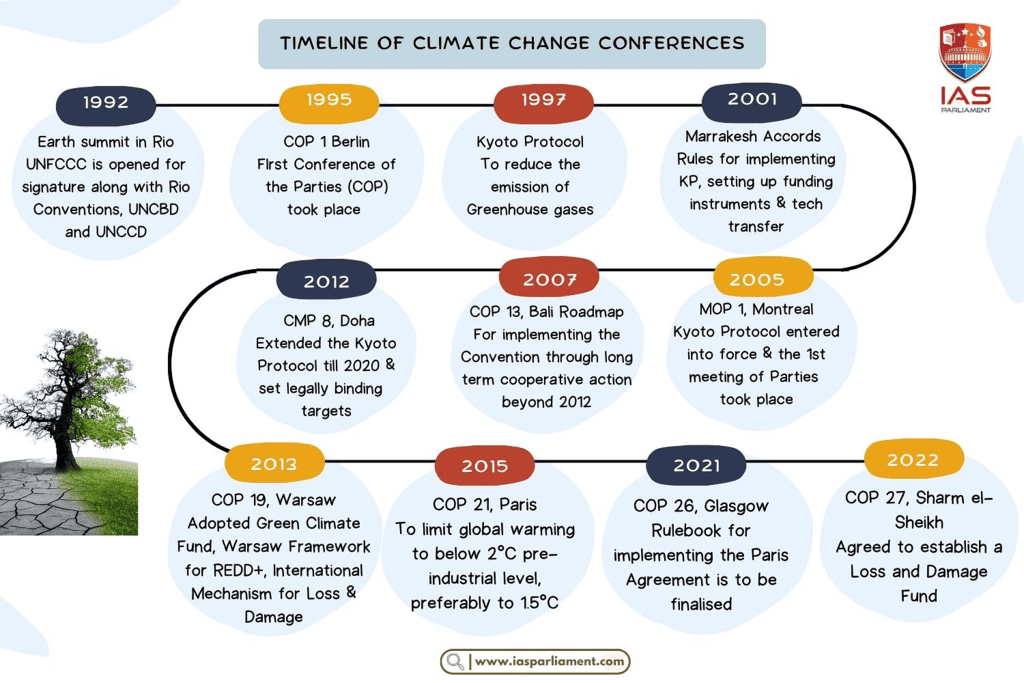 Climate Change Conference timeline
Climate Change Conference timeline
- Promoting Partnerships and Circular Economy: Encourage collaborations along the value chain and promote material circularity to reduce environmental impact.
- Investing in Transition Infrastructure: Collaborate on planning and implementing infrastructure supporting transitions in energy and industry.
- Empowering Development Institutions: Provide mandates to Multilateral Development Banks (MDBs) and climate funds to reduce investment risks in transitioning heavy industries in emerging and developing countries.
- Formulating Roadmaps for Industry Sectors: Develop comprehensive roadmaps for heavy industry sectors, including regulatory frameworks and incentives, facilitating transition finance, and attracting private investments.
The LeadIT Group plays a crucial role in driving global efforts to transition industries toward a more sustainable and climate-friendly future.
India's Forests
Forests and Climate Change
Forests act as the Earth's lungs, crucial in addressing climate change. In India, they represent about 2% of global forests. There are different types: very dense, moderately dense, and more open.
Currently, forests and trees cover about a quarter of India's land, marking an increase. However, some areas gained forests, like Karnataka and Kerala, while others, such as Manipur and Meghalaya, lost some.
India stands out for its rich biodiversity, hosting diverse plants and animals, making it one of the most unique places globally.
Forests play a key role in storing carbon, and India ranks 8th globally for this. In simple terms, India's forests are like superheroes, supporting the environment, fostering diverse life, and playing a vital role in combating climate change.
Forest Types and Cover:
- India has different types of forests based on density:
Very Dense Forest (VDF), Moderately Dense Forest (MDF), and Open Forest (OF).
- VDF covers 3.02% (99,278 sq. km), MDF covers 9.39% (308,472 sq. km), and OF covers 9.20% (304,499 sq. km).
- Forest and tree cover together makeup 24.56% of India's total geographical area, which is approximately 0.73 million hectares.
- India has different types of forests based on density:
Total Forest Cover:
- As of 2019, India's total forest cover is 7,12,249 sq. km, accounting for 21.67% of the country's total geographic area.
- There has been a slight increase compared to the 2017 assessment: 3,976 sq. km (0.56%) in forest cover, 1,212 sq. km (1.29%) in tree cover, and a total increase of 5,188 sq. km (0.65%).
State-wise Changes:
- States like Karnataka, Andhra Pradesh, Kerala, and Jammu and Kashmir have shown significant gains in forest cover.
- However, Manipur, Meghalaya, Arunachal Pradesh, and Mizoram have experienced a decrease in forest cover.
Biodiversity Ranking:
 Shannon–Weiner Index
Shannon–Weiner Index - India is one of the 17 megadiverse countries globally, showcasing rich biodiversity.
- The Shannon–Weiner Index is used to measure species richness and abundance in 16 bio-diverse areas.
Forest Types in States:
- Karnataka and Kerala have high tropical evergreen forest cover.
- Arunachal Pradesh, Karnataka, and Maharashtra have significant tropical moist deciduous forest cover.
- Arunachal Pradesh stands out for tropical dry deciduous forest, while Karnataka leads in semi-evergreen forests.
Carbon Stock in Forests:
- India's total carbon stock in forests is estimated at 7.124.6 million tons, ranking 8th globally.
- The net change in carbon stock is highest in soil organic carbon, followed by Above Ground Biomass (AGB) and Dead Wood.
Negative Growth in Litter Carbon: Litter carbon, a component of carbon stock, has shown a negative growth rate compared to the 2017 assessment.
Green bonds
Green bonds are a way to raise money for projects that are good for the environment, like those focused on sustainability and climate-friendly initiatives.
Why Are Green Bonds Popular? People like using green bonds because they are widely accepted and have become popular in recent years. They help get funds for environmentally friendly projects, and the cost of borrowing money through green bonds is often lower than regular bonds.
Countries Using Green Bonds: Many big countries like the UK, France, Germany, the USA, and China have already used green bonds to raise money for various projects.
Global Impact of Green Bonds: In 2021, the International Monetary Fund (IMF) reported that around $620 billion was raised globally through green bonds. In India, 15 companies raised about ₹34,539 crores through green bonds from 2017 to 2022.
Indian Government's Involvement: To align with the goal of reducing the carbon footprint, the Union Budget for 2022-23 announced the issuance of Sovereign Green Bonds (SGrBs) in India. The Reserve Bank of India (RBI) issued India's first SGrBs in two parts, raising a total of ₹16,000 crores. Non-residents were also allowed to subscribe to these bonds.
Future Impact of SGrBs: The SGrBs issued by the government would serve as a benchmark for private companies to borrow money domestically for their projects focusing on environmental, social, and governance (ESG) aspects.
Green bonds are a way for countries and companies to get money for projects that are good for the environment, and they are becoming more popular globally. India, too, is joining in by issuing its green bonds to support eco-friendly initiatives.
Wildlife Protection
Wildlife is a valuable part of India's heritage, and there is a long history of efforts to conserve it. This concern for wildlife is not just about animals but also about maintaining a balance for the well-being of humans, animals, and plants.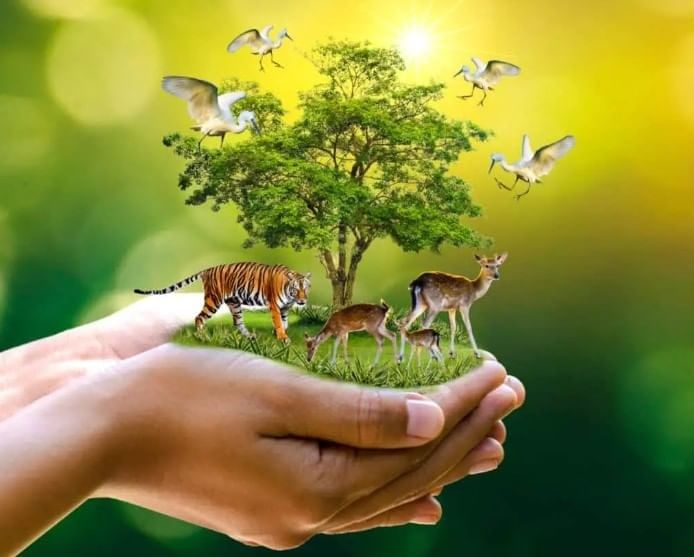
Key Species in Focus: Animals like tigers, lions, and elephants are crucial for the ecosystem. They are known as keystone and flagship species, and their preservation benefits the entire environment.
Tiger Conservation: India has 53 Tiger Reserves, covering about 75,796 sq. km in 18 states. The country successfully doubled its wild tiger population, achieving the goal four years ahead of the target in 2018.
Asiatic Lions: The population of Asiatic Lions has increased steadily, with 674 individuals in 2020, showing a growth rate of 28.87%, one of the highest so far.
Leopard Population Increase: India's leopard population has risen to 12,852 in 2020, which is more than a 60% increase from the 2014 estimate.
Asiatic Elephants: India is home to over 60% of the world's Asiatic elephants, with an estimated global population of 50-60 thousand.
Project Cheetah: India is introducing cheetahs under Project Cheetah, a unique project that involves translocating these large wild carnivores. The goal is to restore open forests and grasslands, conserve biodiversity, and enhance ecosystem services like water security and carbon sequestration. This project will also benefit local communities through eco-development and eco-tourism activities.
The Wildlife Protection Act of 1972 was established by India to provide special legal protection to our wildlife and endangered fauna species. This act has undergone multiple amendments, with the most recent one in 2022 introducing several changes. These changes include the rationalization of schedules, reducing them from six to two.
Furthermore, the amendment removed the schedule listing vermin species and introduced a new schedule to increase the number of species protected under the Convention on International Trade in Endangered Species of Wild Fauna and Flora (CITES). Notably, the government is now empowered to regulate or prohibit the import, trade, possession, or proliferation of invasive alien species.
Single -Use Plastics
India is committed to addressing pollution from single-use plastics despite a per capita plastic consumption of only 11 kg, much lower than the global average of 28 kg.
To combat pollution from plastic waste, the government implemented the Plastic Waste Management Amendment Rules in August 2021, and in July 2022, a ban was imposed on the manufacture, import, stocking, distribution, and sale of single-use plastics.
These measures aim to promote a circular economy, reduce the plastic footprint in packaging, encourage the development of alternative packaging, and guide businesses toward sustainable plastic practices.
 Coca Cola, Infosys,others pledge to ban plastics in India
Coca Cola, Infosys,others pledge to ban plastics in IndiaThe government introduced initiatives like Extended Producer Responsibility (EPR), fixing defined targets for producers, importers, and brand owners.
EPR includes mandatory reuse of rigid plastic packaging and recycling, facilitated through a centralized online portal for implementation.
The system allows the sale and purchase of surplus EPR certificates and imposes environmental compensation for non-compliance with EPR obligations.
Provisions for verification, audit, and monitoring are in place to ensure the effectiveness of these measures.
This governmental action aligns with the 5th United Nations Environment Assembly's resolution in March 2022, titled "End plastic pollution: towards an international legally binding instrument."
Battery Waste Management
In August 2022, the Government introduced the Battery Waste Management Rules to ensure proper handling of waste batteries.
The rules cover various types of batteries, including electric vehicle batteries, portable batteries, automotive batteries, and industrial batteries.
These rules replace the existing Batteries (Management and Handling) Rules from 2001.
The aim is to promote a circular economy in the management of waste batteries.
The rules operate on the concept of Extended Producer Responsibility (EPR), where producers (including importers) of batteries are responsible for collecting and recycling or refurbishing waste batteries.
The EPR mandates that all waste batteries must be collected and sent for recycling or refurbishment, explicitly prohibiting disposal in landfills or through incineration.
The ultimate goal is to recover materials from waste batteries and use them in creating new batteries, contributing to a more sustainable approach in handling battery waste.
E-Waste Management
In November 2022, the Government introduced new E-Waste (Management) Rules, which will replace the existing rules from 2016.
These rules will come into effect from April 2023 and aim to establish a new system for Extended Producer Responsibility (EPR) in e-waste recycling. The key features of these rules include:
Applicability: The rules apply to every manufacturer, producer, refurbisher, dismantler, and recycler in the e-waste industry, who must register online with the Central Pollution Control Board (CPCB).
EPR Regime: A total of 106 Electrical and Electronic Equipment (EEE) have been included under the EPR regime.
Annual Recycling Targets: Producers of notified EEE are given annual recycling targets based on the generation from previously sold items or based on sales of EEE.
Computation of Recycled Quantity: The recycled quantity will be computed based on end-products to avoid false claims.
Environmental Compensation and Verification: Provisions for environmental compensation and verification and audit have been introduced.
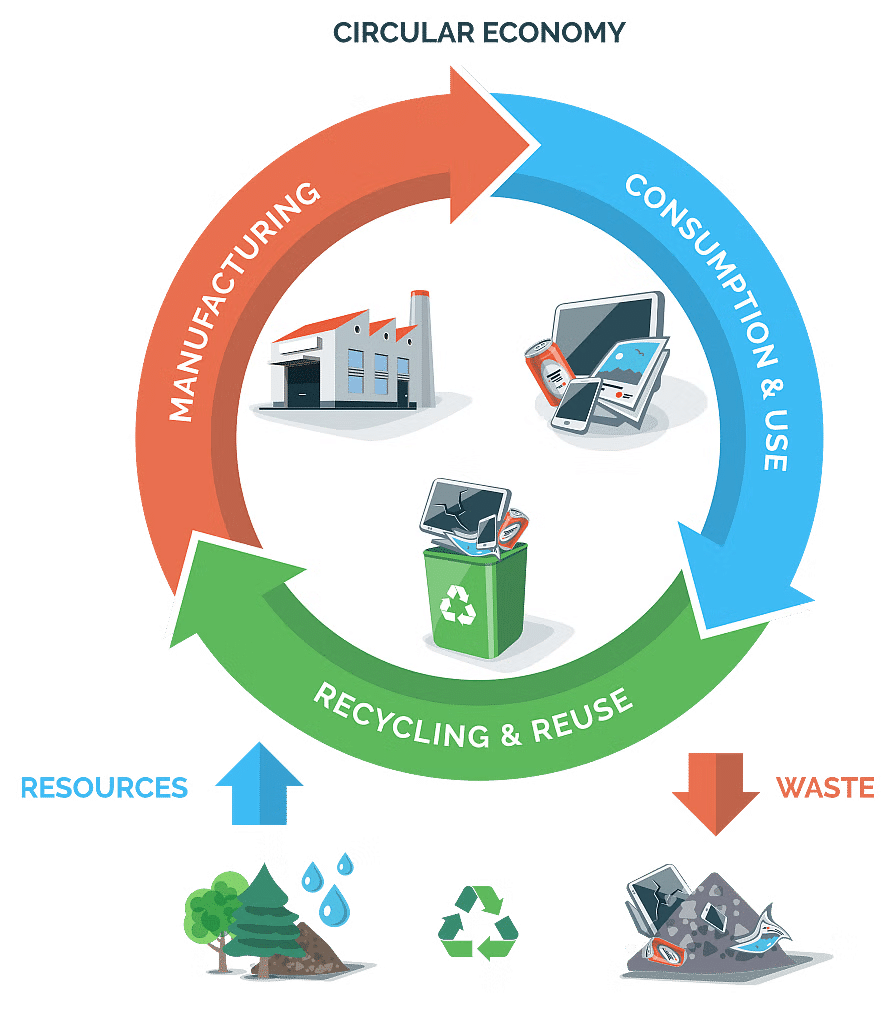 E-waste management
E-waste management EPR Certificate: A provision for the generation and transaction of EPR Certificates has been introduced.
Substance Control: Producers are required to ensure that their products do not contain lead, mercury, and other hazardous substances beyond the maximum prescribed concentration.
Worker Safety and Health: Recognition and registration, skill development, monitoring, and ensuring the safety and health of workers involved in dismantling and recycling e-waste are emphasized.
These rules aim to create a more comprehensive and responsible framework for the management and recycling of e-waste, encouraging environmentally friendly practices and substance control.
Future Outlook
India understands the imperative need for sustainability, considering it an undeniable concern for humanity. The National Agenda of Development, formulated by Niti Aayog, aligns with the Sustainable Development Goals (SDGs), emphasizing a balance among the economic, social, and environmental pillars of development.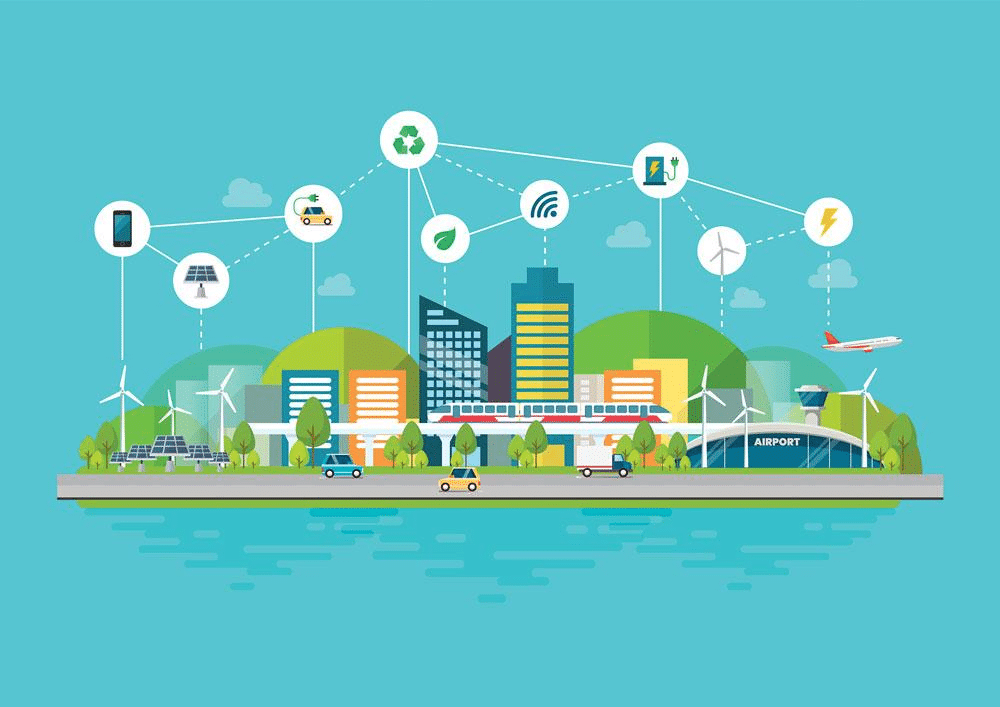 India's future concerns and performance commitments are outlined below:
India's future concerns and performance commitments are outlined below:
Emissions Reduction:
India has successfully reduced emissions intensity of GDP by 21% during 2005-14 and is on track to achieve further emission reduction goals.
The target of 175 GW for renewables by 2022 is expected to contribute significantly to this effort.
Forest and Tree Cover:
Despite ongoing developmental efforts, India is among the few countries where the forest and tree cover is considerably increasing.
As of 2019, it has reached 80.73 million hectares, constituting 24.50% of the geographical area. The total carbon stock in forests has also increased to 7,124.6 million tons.
Environmental Concerns:
Challenges persist in the form of agriculture crop residue burning and construction and demolition (C&D) waste.
The Delhi PPP model in C&D waste management serves as a model for other states and cities, aligning with the Swachh Bharat Mission and supporting SDGs.
Financial Constraints:
Scarce financial resources remain a significant constraint despite efforts from various stakeholders.
Developed countries are urged to honor their financial obligations and promises under multilateral environmental agreements, recognizing their historical benefit from carbon emissions.
Technology Transfer: Development and transfer of technology at affordable costs are crucial for developing countries to effectively address sustainability challenges.
Climate Action and Net Zero Target:
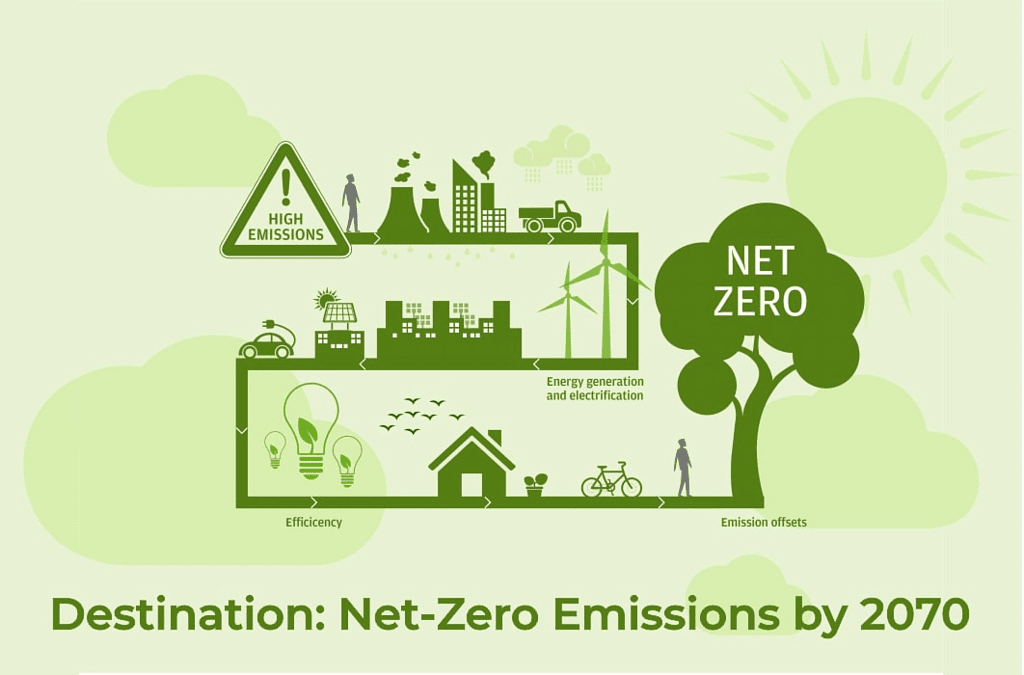
With India's commitment to becoming Net Zero by 2070, climate finance becomes critical for successful action.
Advanced countries setting examples of effective policies and behavioral changes in their own context can pave the way for similar success in developing countries with suitable adaptation.
India emphasizes the importance of collaborative global efforts, financial support, and technology transfer for a sustainable future, highlighting the interconnectedness of environmental, social, and economic goals.
Development with Wisdom
Hardly anything makes economic sense unless we can project its continuation for a long time without encountering problems. Growth and development can happen up to a certain point, but it cannot go on endlessly.
How can the finite Earth meet mankind's unlimited physical needs?
This idea, proposed by the 'Club of Rome' in 1972, was also talked about by Gandhi in the 1930s: 'Earth provides enough to satisfy every man's need, but not for every man's greed.' It's crucial for humanity to think about not only its current needs but also how those needs are being met.
Additionally, we need to distinguish between our basic needs and our desires. Our physical needs are directly connected to the resources we have to fulfill them. To survive and thrive, we must be conscious of the impact of our actions on Mother Nature. Humanity should be smarter not only in choosing the tools for development but also in defining the goals of development.
|
173 videos|487 docs|159 tests
|
FAQs on Ramesh Singh Summary: Sustainability and Climate Change: India and The World- 2 - Indian Economy for UPSC CSE
| 1. What are some key areas of focus in the article "Sustainability and Climate Change: India and The World- 2 UPSC"? |  |
| 2. What is the significance of Green Bonds in the context of sustainability and climate change? |  |
| 3. How does wildlife protection contribute to sustainability efforts in the face of climate change? |  |
| 4. What are some challenges associated with managing battery waste and e-waste in the context of sustainability? |  |
| 5. How can development be pursued with wisdom to ensure sustainability in the face of climate change? |  |
















